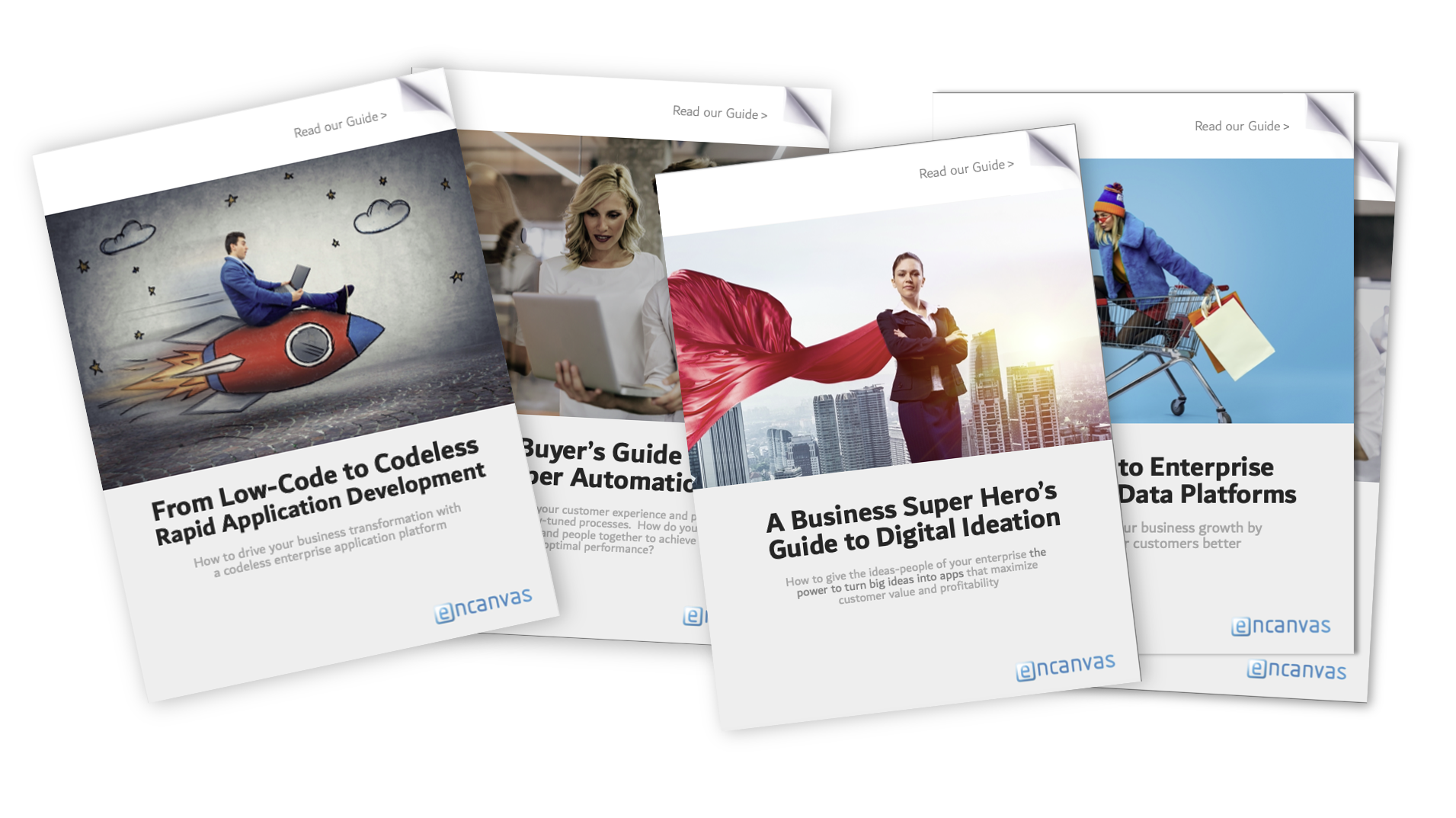What is enterprise software?
Enterprise software describes the software layer of an enterprise computing platform used by business organizations to process data. It is generally associated with human-too-machine interfaces used by the stakeholders of an enterprise rather than machine-to-machine interfaces.
Understanding Enterprise Software Architecture (Anatomy)
The common building blocks of a modern enterprise cloud computing platform are:
- Infrastructure-as-a-Service (IaaS) – the hardware and operating systems software used to house software applications
- Platform-as-a-Service (PaaS) – the software platform used to design, deploy and operate applications
- Software-as-a-Service (SaaS) – the runtime applications used by stakeholders to capture, process and output data
Types of Software found in the Enterprise Architecture
While no organization can function without enterprise software these days, how they design their software platform varies enormously. There are normally four layers to the enterprise applications software stack:
Systems of Record
These are large and expensive software applications used to process mission-critical data to serve common back-office functions such as financial management, manufacturing, human resources, and customer relationship management. These systems deliver value to businesses by enforcing standards in how data is processed and by being extremely reliable to ‘keep the lights on.’ Investments in Systems of Record are in the tune of 60 to 75% of total enterprise software spend.
Business Model Orchestration also known as Situational Applications
The gap that exists between the processing of standard back-office functions and the total data processing needs of the enterprise to fulfill its business model and serve up its customer value represents 10 to 20% of the total enterprise applications platform
Onboard, Embedded and Sensor-based Applications
These are use cases for software embedded into hardware such as smart devices used to manage assets and read-back customer activities and behaviors. Today, these represent 3-8% of the total enterprise stack but, thanks to trends towards increased use of Internet of Things (sensor-networked) technologies, this category is dramatically on the rise.
Personal Data Processing also known as desktop applications.
These are applications created by individuals and small teams to capture, cleanse, process, analyze and share information. This is where the demand for ‘citizen developer’ applications software largely comes from. Whilst it represents just 7-15% of total enterprise applications in terms of spending, it represents an important genre as these applications very much drive user and stakeholder experiences. Expectations on the quality of applications in this genre are extremely high because of the consumerization of IT; the realization of users that applications can be ‘that good’ as the result of using manual coding.

Guide to Digital Transformation
Guide to Hyper Automation
Guide to Digital Ideation
Guide to Customer Data Platforms
Guide to No-Code Platforms
Enterprise Software Architectures and Digital Transformation
Many businesses today are considering the potential of advanced technologies – such as artificial intelligence, the Internet of Things, big data, cloud computing, 3D printing, drones, blockchain, and virtual reality – to transform how. they create value for their customers.
Low Code, No Code and Codeless
When formalizing their digital transformation framework, many leading chief information officers are recognizing that traditional IT methods and tools are too slow, inflexible and costly to use. For this reason, they are turning to agile software development tools and platforms (either code lite, low code, or no code) to author prototypes rapidly, fail fast and bring new app solutions to market faster.
Encanvas offers the easiest to use and most complete toolkit for live wireframing and rapid applications development. It equips DevOps teams with the digital transformation tools they need to outperform competitive rivals.
Enterprise Software and Data Driven Businesses
With a general recognition that business success is increasingly derived from the ability of an enterprise to master and leverage its data value, senior management teams are increasingly exploring ways to make sense of their operational performance through data. The ability to re-use data – to harvest, cleanse, rationalize, and analyze it – has become a mission-critical need.
Ready to discover the new era of codeless software? Check out our products.
Secure&Live – A feature rich and data secure digital transformation platform. Secure and Live is a codeless Enterprise applications Platform-as-a-Service (aPaaS), built to turn business models and strategies into apps.
GlueWare – Enterprise iPaaS for bringing your data together, mashing it up, and bridging between your eCommerce store and back-office, streamlining processes for maximum results.
AppFabric – Build as many apps as you need using an agile codeless SDLC approach and change them as often as you like.
Live Wireframe – Design and publish ebooks, courseware and apps, then go live in two clicks!
CDP – Codeless Customer Data Platform to create a single view of your customer data. Use our data integration tools to harvest insights from across your enterprise and beyond.

Learn about the data safeguarding, features and modules of Encanvas that make it a leader in codeless enterprise aPaaS
Short-comings in Enterprise Software Architectures
Not all, but many present-day enterprise software architectures have some key issue areas. They include:
Suffering from legacy
Some businesses have been hoarding applications for years, ignoring many of them that are ‘good enough.’ With the pace of change in markets increasing every year, companies are constantly revising their business models. Legacy systems costs represent a major distraction, drain on resources and an anchor on innovation.
Too many applications
Access to Software-as-a-Service applications and the slow pace of internal software development has led many organizations to democratize their IT spend to departmental heads. A consequence of this trend has been the proliferation of SaaS tools.
The statistics around SaaS are unnerving. According to a recent report by Blissfully, a New-York startup that operates a platform to track SaaS adoption, the average company with 200 to 500 employees uses about 123 Software-as-a-Service (SaaS) applications these days. For mid-sized companies, there are an average of 32 different billing owners for the SaaS subscriptions. On average, an employee uses eight SaaS applications!
A continued ignorance towards the existence of shadow systems and the need for situational applications
Organizations turn a blind eye to self-authored desktop applications created using simple apps like spreadsheets because they don’t have the bandwidth to care. These applications are effectively being managed not by IT but by business professionals with other jobs to do (like running departments). Worse still, these unregulated apps are known to be unreliable in managing data quality, they scale badly. But that’s not the end of the story. These apps process and save data (so-called shadow data) that’s invisible to IT, yet it can contain private data, confidential company financial data, legal contracts, and competitive information that might place an organization at risk.
The gap that exists between Systems of Record and complete Digital Ecosystems to support Business Models
In most organizations, a gap exists between inflexible Systems of Record – used to enforce good practice in common core back-office processes such as financial management, human resources, and customer relationship management – and the demand for applications from departments, users, teams, customers, suppliers, and other stakeholders to support the fulfillment of a business model orchestration.

About Ian Tomlin
Ian Tomlin is a management consultant and strategist specializing in helping organizational leadership teams to grow by telling their story, designing and orchestrating their business models, and making conversation with customers and communities. He serves on the management team of Encanvas and works as a virtual CMO and board adviser for tech companies in Europe, America and Canada. He can be contacted via his LinkedIn profile or follow him on Twitter.
Now read:
About Encanvas
At Encanvas we have a passion for low-code / no-code (we like to say codeless) software development. We’ve been leading innovation in the enterprise rapid applications development (low-code / no-code / data mashups) industry since 2002.
Our enterprise digital transformation platform is used to design, deploy and run custom apps by uniquely blending application (aPaaS), integration (iPaaS), Robotic Process Automation (RPA), and data mashup codeless software tools.
Encanvas brings agility and innovation to businesses. Used by data-driven organizations around the world, our platform evolves digitalization plans at the speed of light to maximize customer experience and minimize IT costs. Accelerate time to value of new applications as part of your digital transformation or data engineering program. Read the Encanvas Blog to learn more about what we do.
